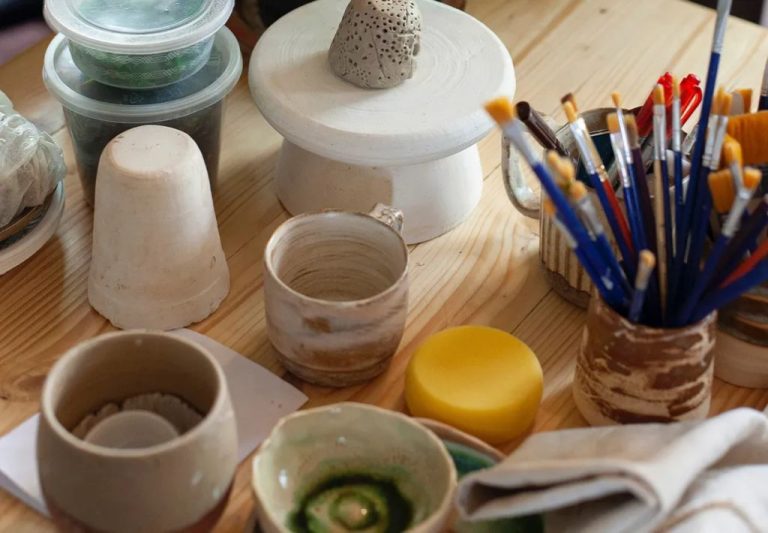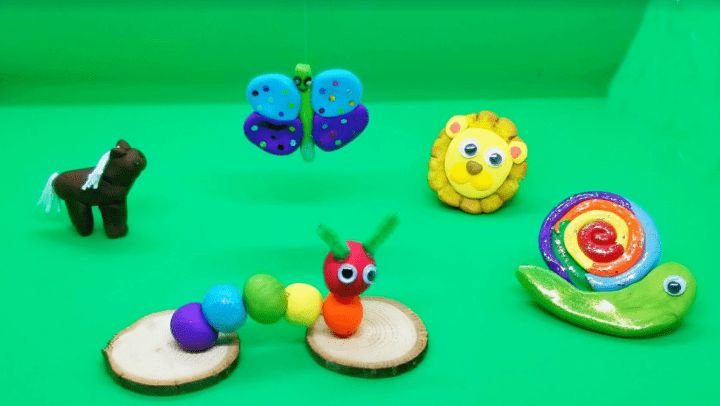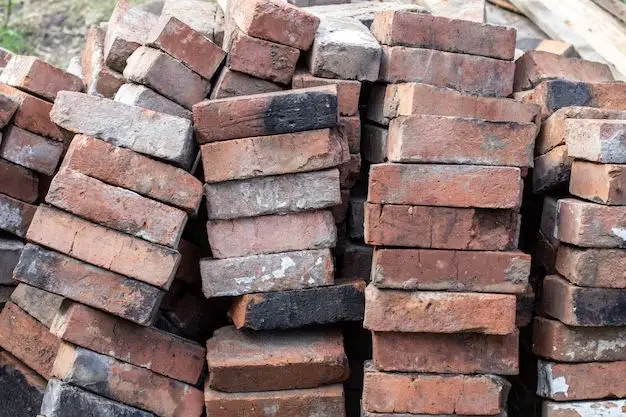What Are Snake Like Pieces Of Clay?
What are Snake Clay Pieces?
Snake clay pieces are handcrafted decorative objects made from clay shaped into sinuous, snake-like forms. They have existed for centuries and can be found in many cultures around the world.
The origins of snake clay pieces can be traced back thousands of years to ancient civilizations like Greece, Rome, and China where clay vessel making was common. Snakes were seen as symbols of fertility, health, and spiritual power. Coiling and shaping clay into snake-like forms became an artistic practice.
Today, snake clay pieces are typically made by skilled artisans through a process of wedging, rolling, and hand-coiling moist clay before sculpting it into different snake shapes and sizes. The pieces are then air dried or fired in a kiln to harden. The firing process allows different colors and finishes to be achieved.
Popular styles for snake clay objects include coiled snake pots, wall hangings, candle holders, figurines, handles for vessels, and decorative beads. More abstract modern styles also exist. The patterns and textures created from the clay coils are an important decorative element.
Common Uses and Purposes
Snake clay pieces have a variety of common uses and purposes. Some of the most popular uses include:
Decorative Purposes – Snake clay pieces make for unique and eye-catching decorations. They are often used as accents on shelves, end tables, mantles, and elsewhere around the home. Their coiled shape and earthy textures allow them to blend in seamlessly with both rustic and modern decor styles. Pieces that resemble natural snakes with detailed scales and markings have an organic look, while more abstract, smoother pieces add flair and geometric interest.
Children’s Toys – Snake clay pieces are versatile children’s toys. Kids enjoy playing with the winding coils and patterns. The pieces spark creativity and imaginative play as children pretend the snakes are slithering around. Textured snake clay pieces also provide sensory stimulation for young children. As a natural material, clay is safe for kids.
Collectibles – Due to their handcrafted artisanal nature, snake clay pieces are often collected. Clay art collectors may curate selections based on themes like color, size, shape and artistic style. Limited edition and one-of-a-kind snake clay pieces are especially prized finds for collectors. The coiled serpent shape has broad appeal accross many aesthetic tastes.
Symbolic Meaning
Snake-shaped clay pieces have been created by cultures around the world for thousands of years. Snakes’ ability to shed their skin conveys themes of renewal, transformation and immortality. The way snakes move by winding their long, flexible bodies evokes creativity and life energy.
In many cultures, snakes symbolize fertility and creation because they lay eggs. Some associate snakes with healing and medicine because of their venom’s ability to both harm and heal. Psychologically, snakes represent the unconscious and intuition. They are thought to embody primal energy, instincts and connection to the natural world.
Different snake styles and types hold distinct meanings. Coiled snakes may symbolize cyclical time, eternity or cosmic energy. Hooded cobras represent protection and royalty in Indian and Egyptian iconography. Interlocked snakes suggest life’s dualities and intimate knowledge. Winged snakes combine reptilian and avian symbolism for transformation.
Regionally, snakes have cultural significance in places like Ancient Greece, India, Africa and indigenous Americas. Greeks honored serpents as emblems of healing, while Hindu and Buddhist mythology view coiled snakes around the neck as symbols of enlightenment and spiritual awakening.
The Artistic Process
Creating lifelike snake pieces from clay requires knowledge of several artistic techniques and methods. Professional snake clay artists rely on a variety of specialized equipment, tools, and processes to shape, texture, and ultimately bring their serpentine designs to life.
Some of the key tools and techniques involved in snake clay artistry include:
Equipment and Tools
Pottery wheels, sculpting stands, calipers, wire loop tools, and rib tools help snake clay artists shape the basic cylindrical form. Sponge stamping tools, texture matts, carving tools, and toothbrushes enable texturing snake skin patterns. Clay extruders allow control in making and tapering coils. A pottery kiln is essential for properly firing and hardening the finished pieces.
Shaping Techniques
Starting with a solid cylinder of clay, artists use the wheel, extruder, or hand building to shape the basic snake body. They pay careful attention to sculpting proportional thickness, tapering the head and tail, and modeling anatomical features like eyes and scales.
Texturing Methods
To recreate a snake’s scales, artists use a variety of techniques like sponge stamping, imprinting with texture mats, meticulously carving each scale, or stippling with specialized clay tools. The patterns bring realism and a tactile quality.
Baking/Firing Process
Once shaped and textured, the unfired clay must be slowly baked in a kiln according to the specifications of the clay type to thoroughly dry and harden the piece. Firing typically takes 8-12 hours at high temperatures between 1200-2200°F.
Notable Snake Clay Artists
Snake clay art has been around for centuries, with artisans across the world shaping these serpentine sculptures. Here are some of the most famous snake clay artists and their inspiring works:
Nagini – Based in India, Nagini has been crafting snake clay sculptures for over 30 years. She focuses on cobras and other venomous serpents, sculpting them with incredible realism and textured scales. Her pieces have been displayed in galleries across Asia and beyond.
Medusa – Working out of Greece, Medusa pioneered a style of abstract, minimalist snake clay sculptures. Her elongated, smoothed-out snakes are known for their fluid shapes and mesmerizing forms. She often incorporates multiple snakes intertwining in creative compositions.
Quetzalcoatl – This Mexica artist is renowned for his vibrant feathered serpent pieces depicting the important Mesoamerican deity. Quetzalcoatl’s sculptures combine mythical imagery with a modern aesthetic, bringing an ancient tradition into contemporary art.
Mamba – A young, up-and-coming snake clay artist based in Kenya, Mamba creates lifelike black mamba sculptures, capturing every scale and muscle in striking detail. His work has a dangerous, yet beautiful quality. Galleries across Africa and Europe have begun showcasing Mamba’s breathtaking works.
Fun Facts
Snake clay pieces have some fascinating backstories and unusual production methods that make them extra special. Here are some fun facts about these unique ceramic creations:
The earliest known snake clay pieces were made in China during the Shang Dynasty around 1600 BC. These coiled serpents were seen as sacred guardian spirits.
Some ancient Mesoamerican cultures like the Aztecs crafted snake sculptures and figurines out of clay for ritual purposes. The feathered serpent god Quetzalcoatl was often depicted.
Snake clay pieces are still made using traditional coiling techniques. The artist rolls out ropes of clay and coils them up, then smooths the coils together to form the snake’s body.
Raku firing is a historical Japanese technique sometimes used for snake pieces. The pottery is heated and removed from the kiln while red hot, then placed in containers with combustible materials to create beautiful cracked glazes.
Abstract modern snake designs incorporate unique shapes like waves, zigzags, and geometric patterns. These artsy pieces put a contemporary spin on an ancient artform.
Some artists hide secret compartment in the coils of their snake sculptures. These hidey-holes can be used to hold tiny treasures.
Purchasing Tips
Snake clay pieces can be purchased from a variety of sources, both online and in-person. Here are some tips for finding quality pieces at fair prices:
Online marketplaces like Etsy offer a wide selection of handmade snake clay pieces from independent artists around the world. When buying on Etsy, read reviews and look at photos to evaluate quality. Expect to pay $20-50 for a small piece, or $50-150 for a large, elaborate piece.
Local pottery studios and art fairs are great places to find unique, one-of-a-kind snake clay pieces while supporting local artists. Expect to pay similar prices to Etsy. Inspect pieces closely for neat detailing and clean finishes.
Import shops and fair trade stores can offer snake clay pieces from particular regions around the world. These are typically handmade using traditional techniques. Avoid pieces with cracks, chips, or other defects. Prices vary widely based on size and origin.
When evaluating any snake clay piece, look for clean lines, smooth surfaces, crisp detail work, and no visible flaws. Higher prices are typical for large, ornate, or specially commissioned pieces. With proper care, a quality snake clay piece can become a treasured heirloom.
Caring for Your Snake Clay Pieces
Snake clay pieces are relatively durable, but they still require some basic care and maintenance. Here are some tips for keeping your snake clay artifacts looking their best:
Cleaning Methods
Gently dust pieces regularly with a soft cloth to prevent dust buildup. For more thorough cleaning, use a mild soap and warm water solution. Dip a soft cloth in the solution and gently wipe the surface. Avoid harsh scrubbing or abrasives that could damage the piece. Allow to fully dry before storing or displaying.
Storage Considerations
Store snake clay pieces in a climate-controlled environment away from extreme temperature and humidity fluctuations. Pack carefully in bubble wrap or soft cloth when storing for long periods. Avoid stacking pieces directly on top of one another to prevent scratches or chips.
Repairing Broken Parts
If a piece chips or breaks, repairs may be possible with specialty epoxy adhesives designed for ceramics. Carefully glue broken edges together and allow time to fully cure before handling. For missing pieces, consider consulting a museum art restoration specialist. Handle repaired items gently, as epoxy can break down over time.
Inspiring Design Ideas
Snake clay pieces can add a fun and unique touch to any space. Here are some creative ways to display and use them in your home or for gifting:
Displaying in the Home
Use snake clay pieces as part of your home decor. Arrange a few pieces on a coffee table, bookshelf, or desk for an artistic accent. Or group together a collection of different snake pieces in a shadowbox frame for interesting wall art.
Using in Creative Crafts and Decor
Incorporate snake clay pieces into DIY craft projects. Glue pieces onto pots and vases to create one-of-a-kind planters. Or use them to embellish candle holders, jewelry boxes, or other decorative items.
You can also display the snake pieces creatively by threading them onto garlands or wreaths. Or arrange them in glass terrariums with plants or moss for unique tabletop decor.
Gifting Ideas
Snake clay pieces make fun and memorable gifts. Create custom gifts like a snake clay photo holder or paperweight. Or arrange a few complementary snake pieces in a gift box or basket for a unique present.
For kids, make DIY snake clay magnets or ornaments to give as gifts. The snake pieces can inspire creativity and imaginative play.
The Future of Snake Clay Pieces
Snake clay pieces are poised to grow even more popular in the future as new trends, innovations, and predictions for the artform emerge.
One of the biggest trends will likely be increased digitization. While traditional hand-sculpted snake clay pieces will remain popular, 3D printing and other digital fabrication methods may allow more intricate and customizable snake designs. We’ll also likely see more augmented reality applications that bring virtual snake clay creations to life.
As the art form gains popularity, innovations in materials and methods will also arise. Some possibilities are glow-in-the-dark or color changing snake clays, incorporating electronics or sensors into designs, and collaborations with other art forms like glass or metalworking to create unique hybrid pieces.
Snake clay art has come a long way from its roots as a folk craft. It’s likely that over the next decade or two, snake clay pieces will continue gaining recognition as a contemporary art form. New museums, galleries, awards and educational programs dedicated specifically to snake clay art may develop. We may even see snake clay designs integrated into architecture, home decor, jewelry and pop culture in whimsical new ways.
The future of snake clay art is wide open. As artists push boundaries and more people discover this mesmerizing medium, snake clay is poised to slither into the mainstream and coil itself around our hearts.




